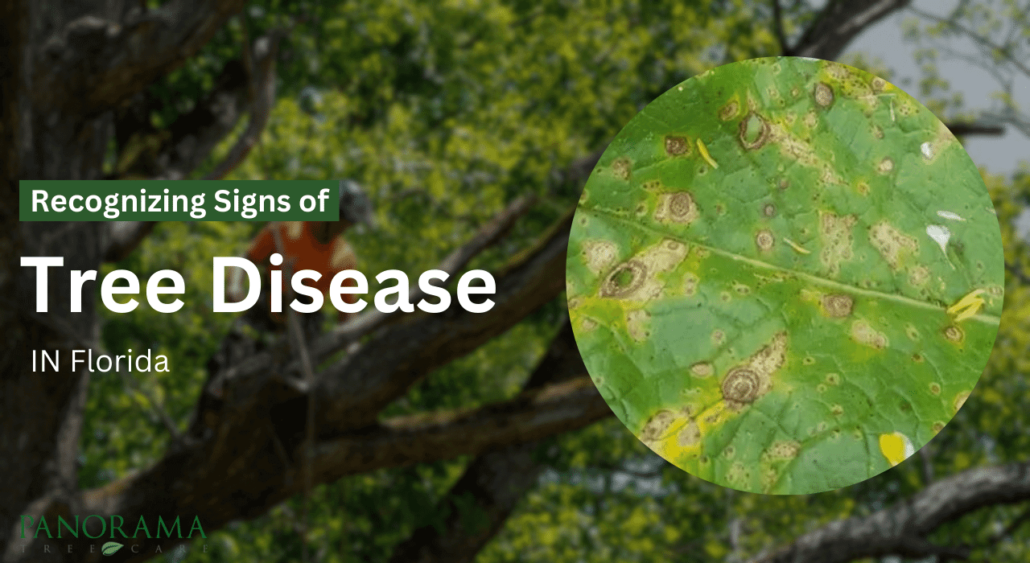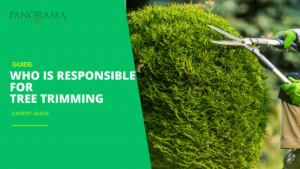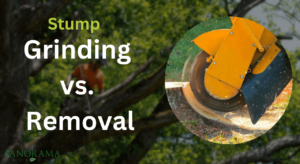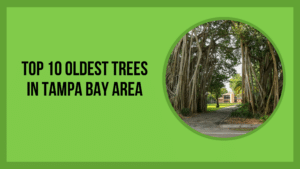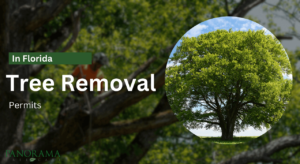Florida’s lush landscape is a testament to its diverse and vibrant ecosystem, with trees playing a pivotal role in maintaining ecological balance and enhancing the beauty of the environment.
However, like all living beings, trees are susceptible to diseases that can impair their growth and, in severe cases, lead to their demise.
Recognizing the signs of tree disease and understanding when to call a tree service are crucial steps in safeguarding Florida’s green heritage.
Common tree diseases can have far-reaching consequences, affecting not only the aesthetic appeal of your property but also the environment and property values.
As such, it is essential for homeowners to be aware of the identification and prevention of these ailments.
Identifying Tree Diseases in Florida
Early detection is key to effectively managing and controlling tree diseases. Here are some common signs to look out for:
Leaf Discoloration and Spotting:
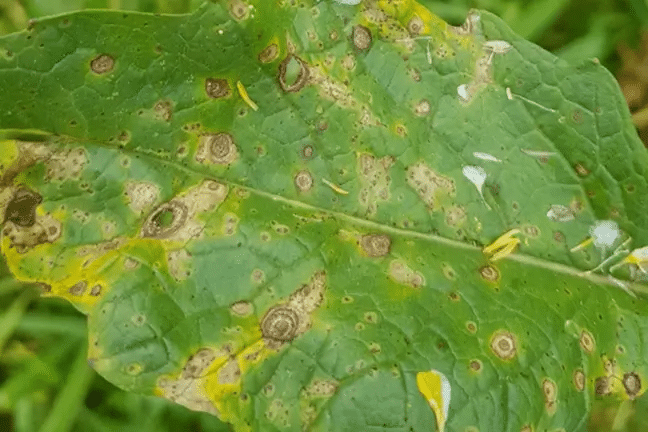
Leaf discoloration and spotting can be indicators of various fungal and bacterial diseases.
Anthracnose, for example, causes brown or black spots on leaves, while leaf spot diseases result in circular or irregular patterns of discoloration.
These symptoms are often caused by fungi or bacteria that thrive in warm, humid conditions.
Bark Abnormalities:
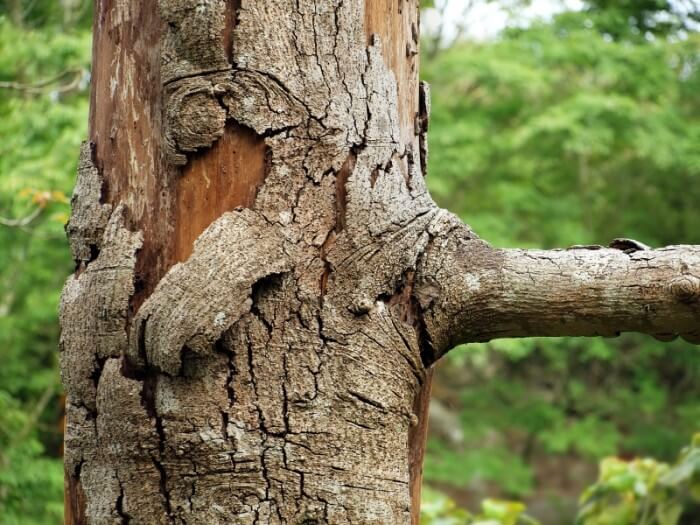
Cankers, galls, and seeping sap are all signs of bark abnormalities that can indicate underlying tree diseases.
Cankers are sunken or discolored areas on the bark, often caused by fungal pathogens.
Galls are abnormal growths on branches or trunks, typically resulting from insect infestations or bacterial infections. Seeping sap can be a symptom of various diseases or environmental stresses.
Twig and Branch Dieback:
When twigs and branches begin to wilt and die back, it could be a sign of root rot, vascular wilts, or other diseases that impair the tree’s ability to transport water and nutrients.
These symptoms are often accompanied by leaf discoloration or premature leaf drop.
Overall Tree Decline:
In some cases, tree diseases can manifest as a general decline in the overall health and appearance of the tree.
This can include stunted growth, sparse foliage, or premature leaf drop. Nutrient deficiencies, environmental stress, and root damage can all contribute to this condition.
Common Tree Diseases in Florida
Common Tree Diseases that Affect Florida Trees
Florida’s warm and humid climate is ideal for the growth of various fungi, bacteria, and pests that can cause diseases in trees.
These ailments not only affect the health and appearance of the trees but also have a profound impact on the environment and property values.
Diseased trees can become hazards, falling and causing damage, or they can decrease the overall appeal of a property, affecting its market value.
Prevention and Treatment
Preventing tree diseases is often easier and more cost-effective than treating them once they have taken hold.
Here are some effective prevention and treatment strategies:
Cultural Practices:
- Proper planting and site selection: Choose disease-resistant tree varieties and plant them in suitable locations with appropriate soil conditions and spacing.
- Appropriate watering and fertilization: Maintain proper watering schedules and follow recommended fertilization practices to promote tree health and vigor.
- Mulching and pruning techniques: Apply mulch to maintain soil moisture and suppress weeds, and prune trees properly to remove diseased or damaged branches.
Biological Control Methods:
- Beneficial insects and microorganisms: Introduce natural predators or antagonistic microbes that can help control or suppress certain tree diseases.
- Resistant varieties: Plant disease-resistant tree varieties that have been bred or selected for their ability to withstand specific diseases.
Chemical Treatments:
- Fungicides and insecticides: In severe cases, chemical treatments may be necessary to control fungal diseases or insect infestations. Always follow label instructions and safety precautions when using these products.
- Application methods: Proper application methods, such as trunk injections, soil drenches, or foliar sprays, are essential for effective disease control.
Monitoring and Early Detection
Regular tree inspections and seeking professional assistance are crucial for early detection and effective management of tree diseases. Here are some proactive steps to take:
- Conduct regular visual inspections of your trees, looking for signs of disease or insect infestations.
- Consult with certified arborists or plant pathologists for accurate diagnosis and treatment recommendations.
- Report suspected cases of exotic or quarantine pests and diseases to local authorities, such as the Florida Department of Agriculture and Consumer Services.
When to Call a Tree Service
While regular inspections and preventive measures are essential for maintaining tree health, there may be times when the expertise of a professionals is required. That’s when our certified tree care experts Tampa can provide trusted advice, diagnosis, and long-term care planning for your landscape.
Calling in experienced arborists or tree care professionals can be crucial in the following situations:
- Severe or Advanced Disease Symptoms
- Large or Hazardous Trees
- Inaccessible or Difficult Locations
- Need for Specialized Equipment or Techniques
- Preventive Maintenance and Planning
- Emergency Situations
If you’re located in the greater Tampa Bay area, Panorama Tree Care is a reputable local tree service company that can assist with all your tree care needs. Our team of certified arborists and experts have extensive experience in identifying and treating tree diseases, as well as providing safe and efficient professional tree removal service, pruning, and maintenance solutions.
It’s important to note that while some tree care tasks can be handled by homeowners, attempting to tackle complex or dangerous situations without proper training and equipment can result in further damage or injuries.
Consulting with a reputable and certified tree service company like us can ensure the health and safety of your trees and your property are prioritized.
When in doubt, it’s always better to err on the side of caution and seek professional assistance from experienced arborists or tree care specialists.
Our expertise and proper equipment can make all the difference in effectively managing and preventing tree diseases in Florida.
Conclusion
Protecting Florida’s urban and natural forests requires a proactive approach to tree care and disease management. By recognizing the signs of tree diseases, implementing preventive measures, and seeking professional assistance when needed, homeowners and landscape professionals can play a vital role in maintaining the health and beauty of the state’s trees.
Remember, a thriving and disease-free tree population not only enhances the aesthetic appeal of our surroundings but also contributes to a healthier environment and higher property values. Stay vigilant, and take the necessary steps to safeguard these invaluable natural resources for generations to come.
Concerned about your trees? Reach out to us today to schedule an inspection or consultation with our certified Tampa arborists.

